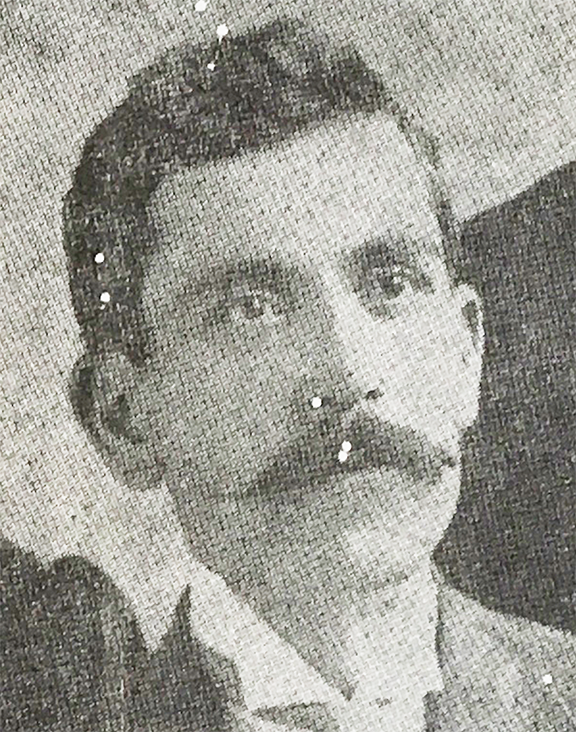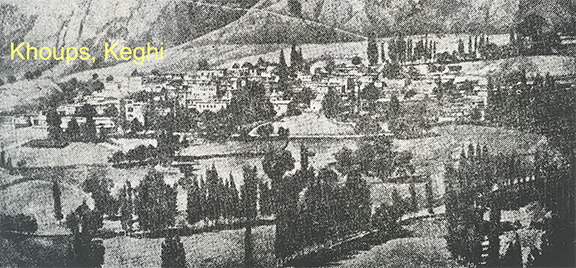Lest We Forget: Aram Toros Arvanigian
May 25, 2016
Aram Toros Arvanigian
BY LEVON BARONIAN
ENGLISH TRANSLATED BY VAHE H. APELIAN
“Unaccountable is the number of the victims of the Armenian people. From the First World War and onward the names of many martyred victims have been forgotten. Among them is Aram Toros Arvanigian who was better known by his endearing nickname Vartabed. He was martyred in 1915 along with the brave Khoupsetsis.
Aram was born in the village of Khoups in Keghi, on March 10, 1874. He left the village early on and joined his brothers in Istanbul who enrolled him in the Armenian Seminary of Jerusalem to prepare him for priesthood.
Aram finished the Seminary’s course but did not want to be ordained as a priest. His temperament was not suited for an ecclesiastic life.
During the 1895-96 persecution and massacres of the Armenians in Istanbul and in the interior of the country, his brothers managed to escape to Bulgaria. In 1900’s Aram left Jerusalem and joined them. He did not stay with them for long. In 1903 he came to America and settled in Providence where there was a sizeable vibrant Armenian community and joined the ranks of the Armenian Revolutionary Federation. Thanks to his calm, composed and persuasive personality he soon became a much-noted member of the community and was endearingly nicknamed Vartabed in recognition of his upbringing in the Seminary of Jerusalem. Through his efforts the first women’s Gomideh was established in America whose founding meeting took place in the residence of Mrs. Hripsime Arvanigian.
Aram left Providence in 1911 and returned to his beloved village Khoups where he continued to be an active member of the community. He paid particular attention to the state of the education in Khoups and became a natural leader around whom the youth of the village congregated and organized themselves. He married Arousiag Mouradian who was a teacher. They both espoused the same ideals and formed a happy family. However their happy lives were short lived.
In October 1914 the Turk and the Russians declared war on each other. The Turkish government seizing the warring state armed the Turks and Kurds in the region who started threatening the very existence of the Armenians. The villagers of the Khoups, under the leadership of Aram, formed a military council to defend themselves.

The Village of Koups
On May 9, 1915 representatives form the government arrived to the village and ordered the villagers to prepare leaving Khoups in a week for the government to escort them to Kharpert. Meanwhile thousands of armed Turks and Kurds were encircling and threatening the village.
The Khoupsetsi held a meeting in the yard shared by the church and the school. Mikael Nalbandian, from the military council, and Aram Arvanigian spoke to the people. Aram presented the grave situation they were facing and asked the villagers if they are willing to fight and die honorably or abide by the order and face an uncertain future. The villagers unanimously declared that they would rather stay and die defending themselves in their village.
On May 18, between 8 to 10 thousand soldiers and armed civilians, under the leadership of the regional Turkish governor, attacked Khoups.
The Khoupsetsis put a fierce defense for the next seven days, until May 24. Between 40 to 45 combatants died defending the village. On the morning of May 25, fighting came to a lull and the Turkish forces appeared retreating. The Military Council called for another meeting and presented to the villagers the bare facts of their situation. Their stock of bullets had considerably diminished. Should the attacks resume they will not be able to defend themselves for any appreciable period of time. They decided instead to find a way through the mountain passes nearby and reach Dersim. Few young men took the responsibility surveying the safety of the mountain passageways.
The surveyors brought word that the passageways appeared safe for crossing. In the evening the Khoupsetsis started leaving the village on their way to Dersim through a neighboring friendly village whose Kurdish tribe spoke the local Dersim dialect and had refused to accept arms from the government against the Armenians. It would have taken them three hours to reach to their safe destination.
The retreat of the Turkish army proved to be a ploy. Barely twenty-five minutes after leaving the village, Turkish soldiers and armed irregulars from a Kurdish tribe known for its violence encircled them. A fierce fight erupted. Men, women, young and old Khoupsetsis put a fierce resistance that lasted all night long. By the morning of May 26 an eerie calm prevailed over the battleground. Barely 200 out of the 2151 brave Khoupsetsis had survived.
The members of the Military Council were killed fighting with the rest of the fallen Khoupsetsis. Their remains remained between Khoups and the Armenian village Sakatsor, but their memories linger among the Khoupsetsis and the rest of the Armenians.